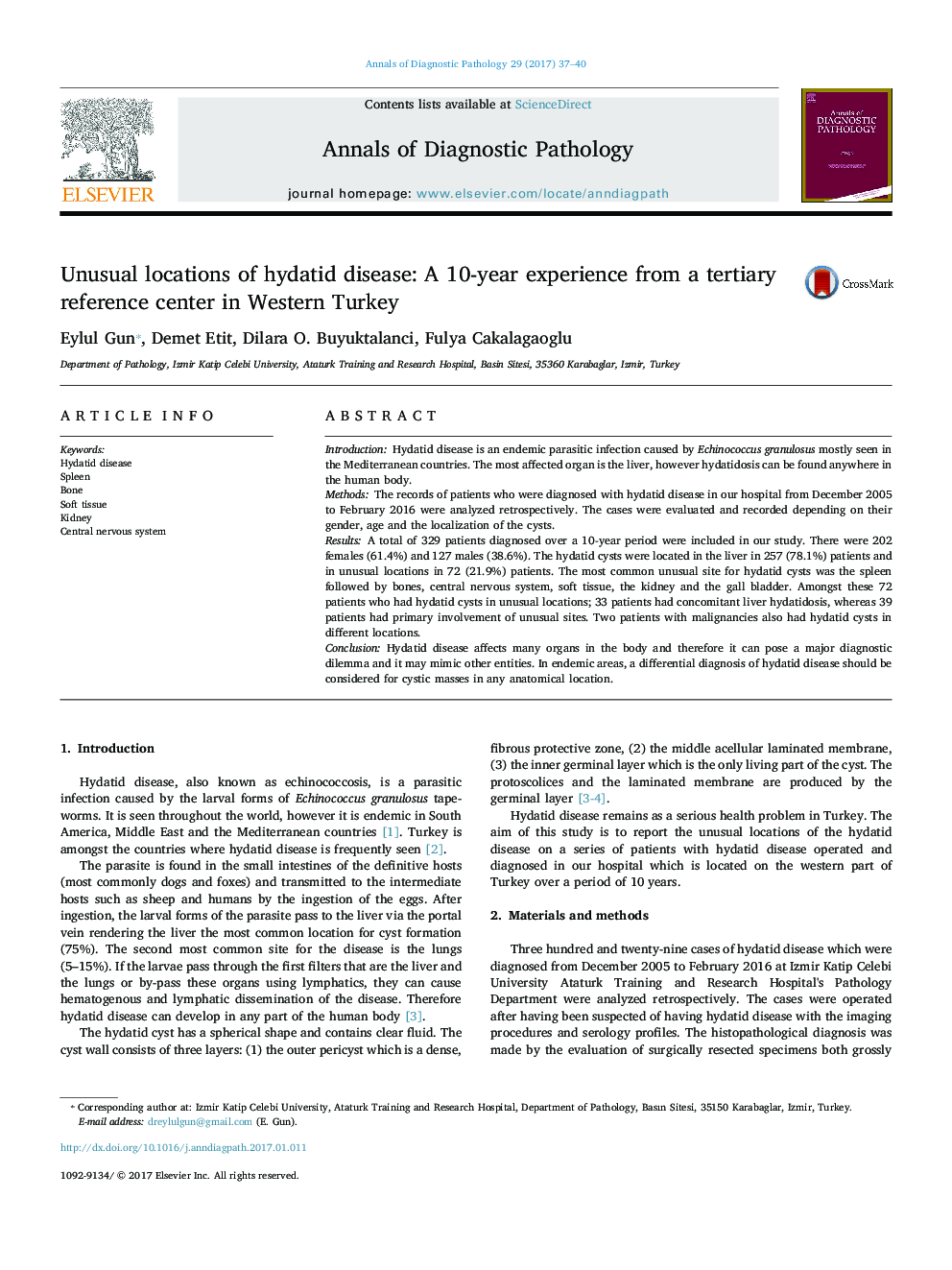| Article ID | Journal | Published Year | Pages | File Type |
|---|---|---|---|---|
| 5715844 | Annals of Diagnostic Pathology | 2017 | 4 Pages |
â¢Hydatid disease is an endemic parasitic infection caused by Echinococcus granulosus mostly seen in the Mediterranean countries.â¢It is mostly seen in the liver and the lungs however here we aimed to identify the unusual locations.â¢The most common unusual locations were spleen, bones, central nervous system, soft tissue and kidney.
IntroductionHydatid disease is an endemic parasitic infection caused by Echinococcus granulosus mostly seen in the Mediterranean countries. The most affected organ is the liver, however hydatidosis can be found anywhere in the human body.MethodsThe records of patients who were diagnosed with hydatid disease in our hospital from December 2005 to February 2016 were analyzed retrospectively. The cases were evaluated and recorded depending on their gender, age and the localization of the cysts.ResultsA total of 329 patients diagnosed over a 10-year period were included in our study. There were 202 females (61.4%) and 127 males (38.6%). The hydatid cysts were located in the liver in 257 (78.1%) patients and in unusual locations in 72 (21.9%) patients. The most common unusual site for hydatid cysts was the spleen followed by bones, central nervous system, soft tissue, the kidney and the gall bladder. Amongst these 72 patients who had hydatid cysts in unusual locations; 33 patients had concomitant liver hydatidosis, whereas 39 patients had primary involvement of unusual sites. Two patients with malignancies also had hydatid cysts in different locations.ConclusionHydatid disease affects many organs in the body and therefore it can pose a major diagnostic dilemma and it may mimic other entities. In endemic areas, a differential diagnosis of hydatid disease should be considered for cystic masses in any anatomical location.
